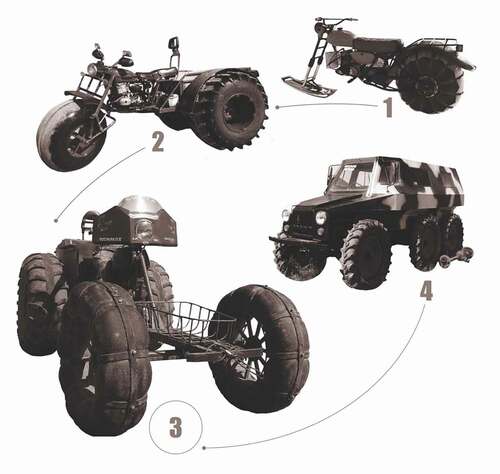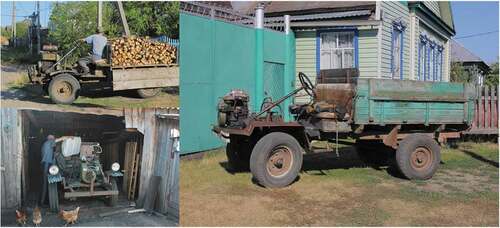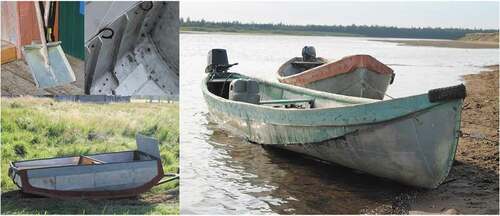Figures & data
Figure 1. The geographical context of the study. Three cases are probes into three different types of Russian rurality: the borderland between underdeveloped area and forest area, forest-agricultural area, agricultural area. Map by Irina Osadcheva, a research team member, adapted from (Nefedova and Pallot Citation2006).
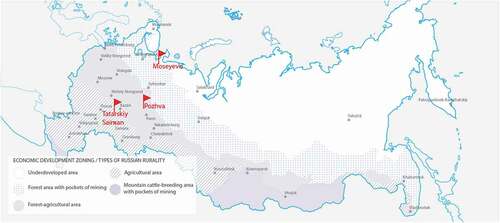
Figure 3. Top-tops 2.0/versatile tractors. Photos by Daria Zhukovskaya, a field team member, June 2018.
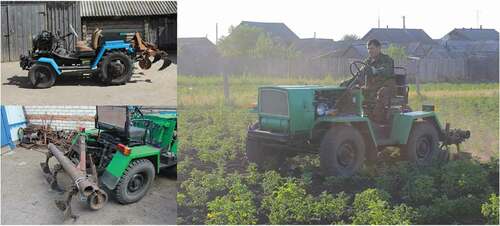
Figure 5. For working with the four-millimetre sheet metal, the local boat-makers crafted (top left) a bender (zagibulina) for shaping the beak and sides of the boat; (bottom left) a wooden vice for clamping workpieces in place; and (right) a new metal cutter for the ‘Druzhba’ gasoline chainsaw. Photos by Alexandra Raeva, August 2018.
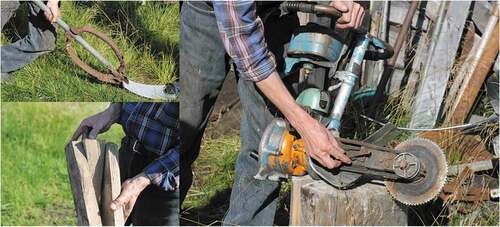
Figure 6. Pozhva ‘jeeps’ and their makers/owners. Photos by Ilya Abramov, a field team member, March 2018.
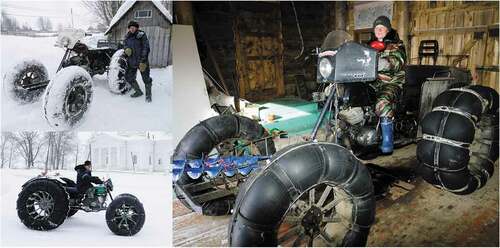
Figure 7. The workshop and tools of Pozhva’s best-known handyman in making cross-country vehicles on low-pressure tires. Photos by Ilya Abramov, a field team member, March 2018.
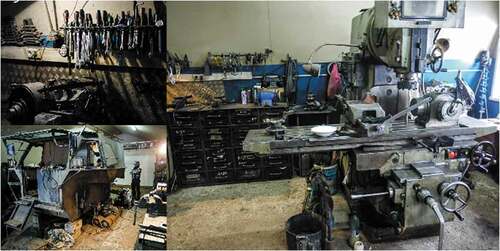
Figure 8. Four stages of Pozhva jeeps’ evolution: (1) an early version with a front ski was made based on drawings in a Soviet DIY-magazine, (2) a three-wheeler was an all-season modification, later advanced to (3) a four-wheeler that became a ‘golden standard’; and (4) a six-wheeler, which was a trial that did not fit in Pozhva’s everyday living. Photos and compilation by Alexandra Raeva.
